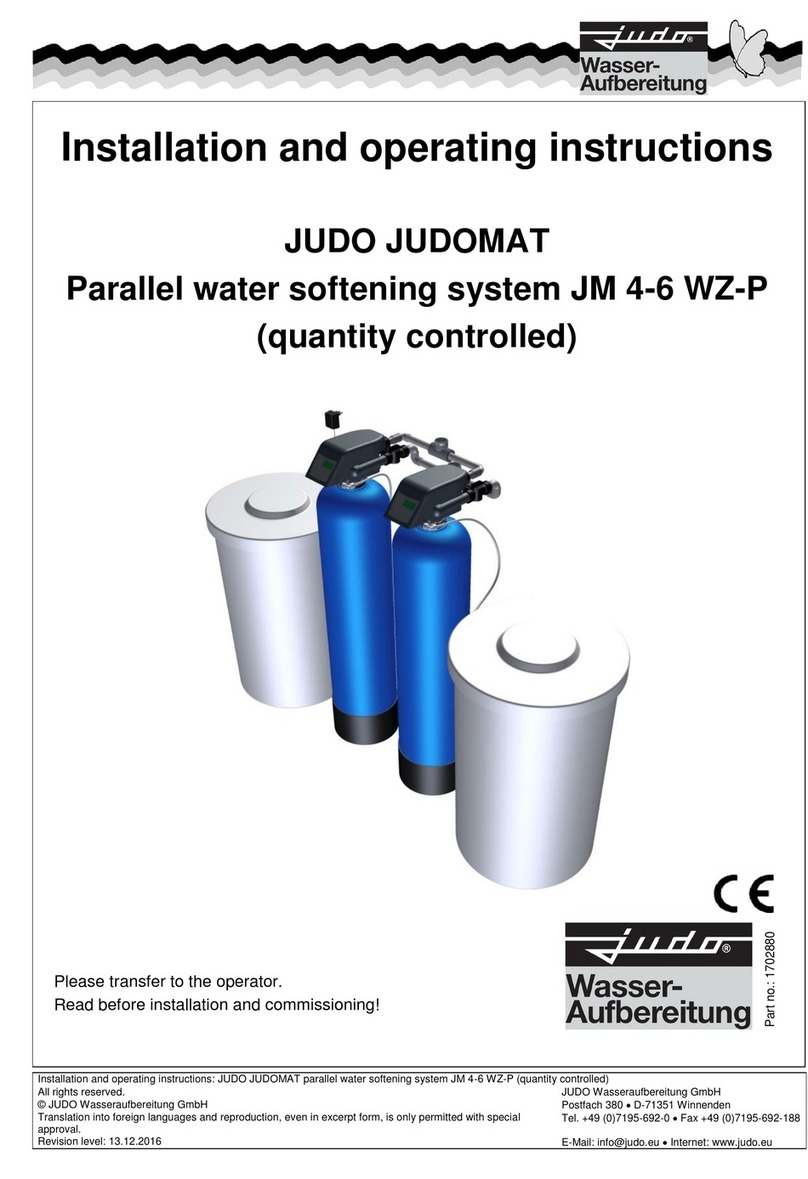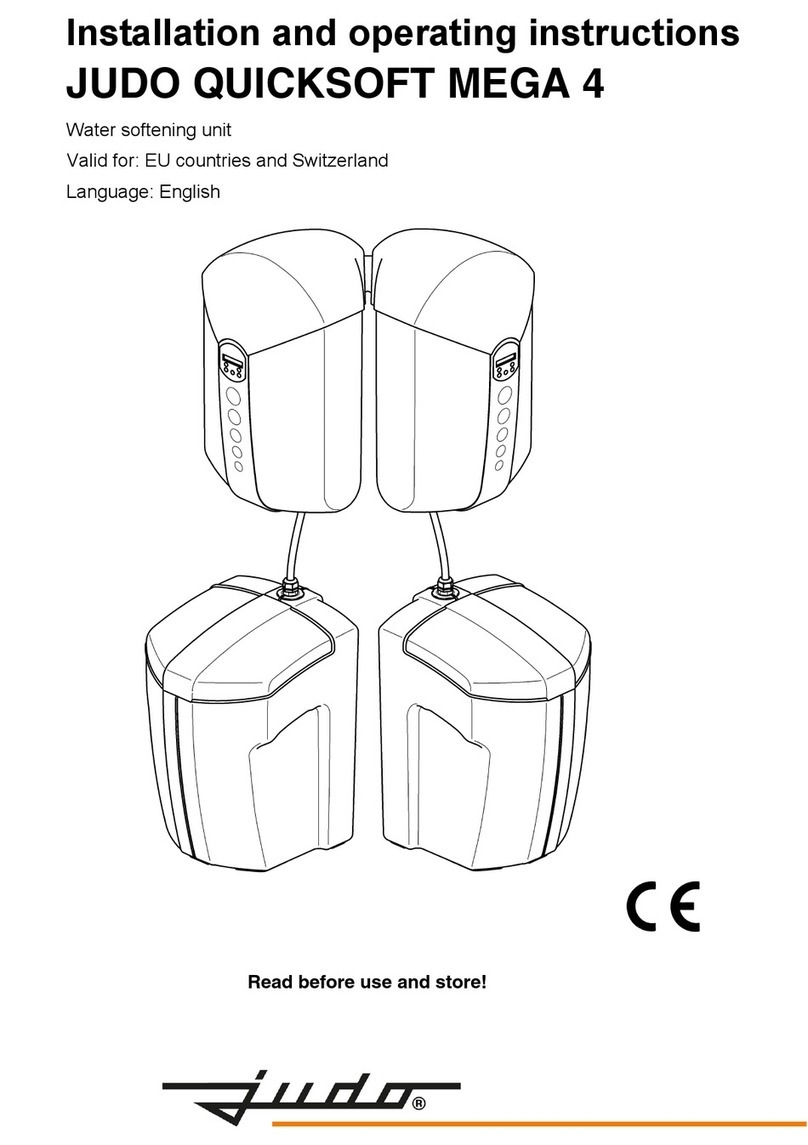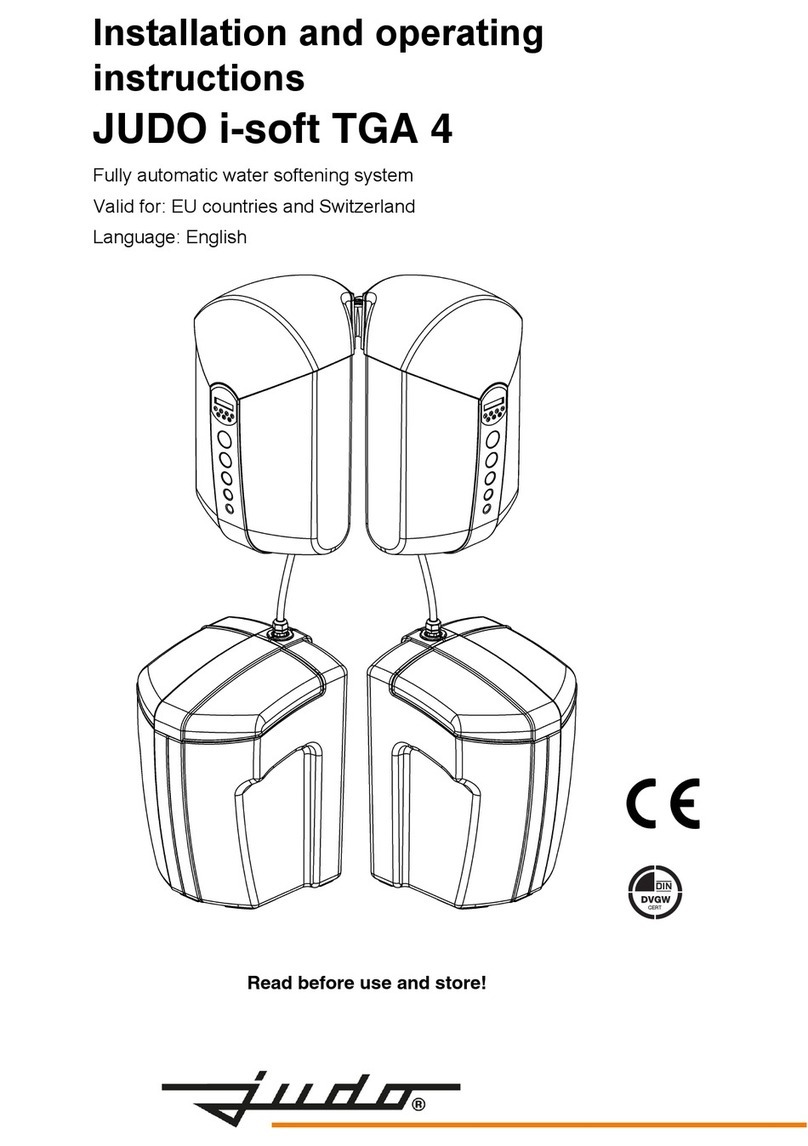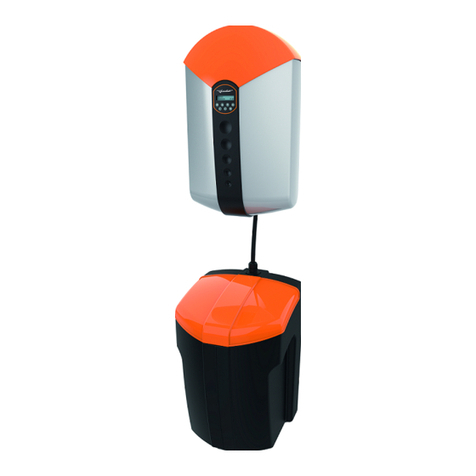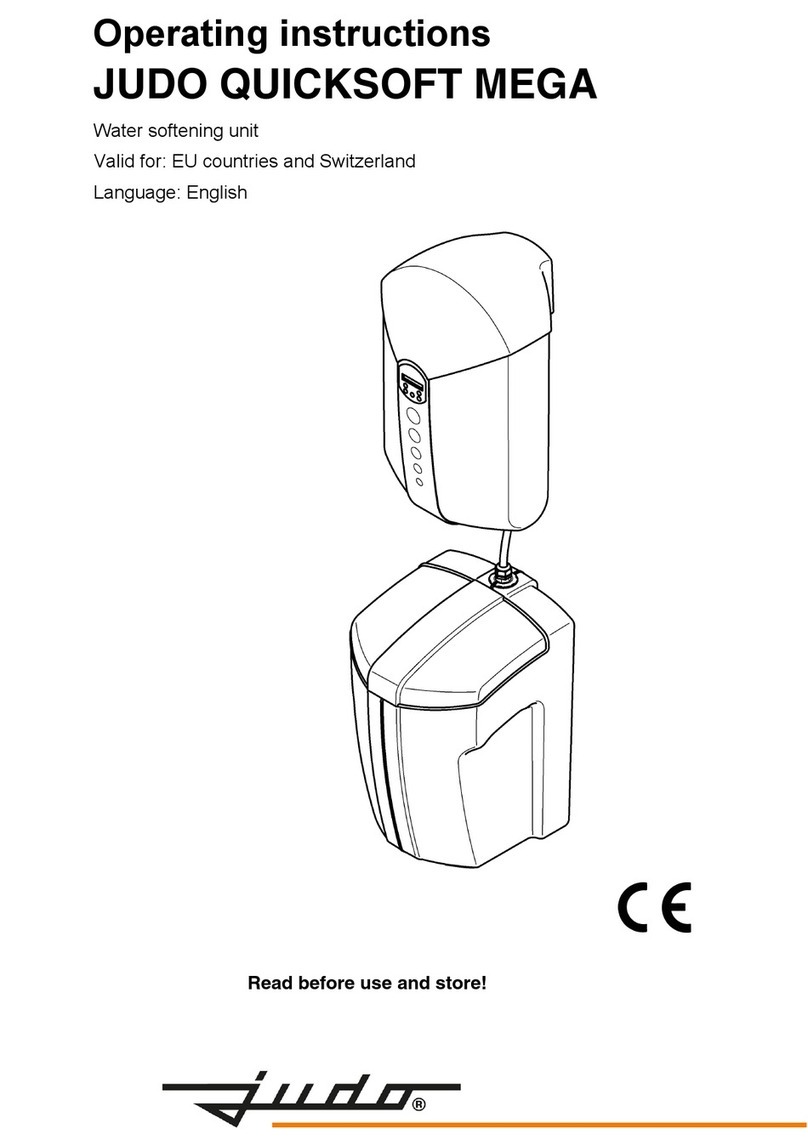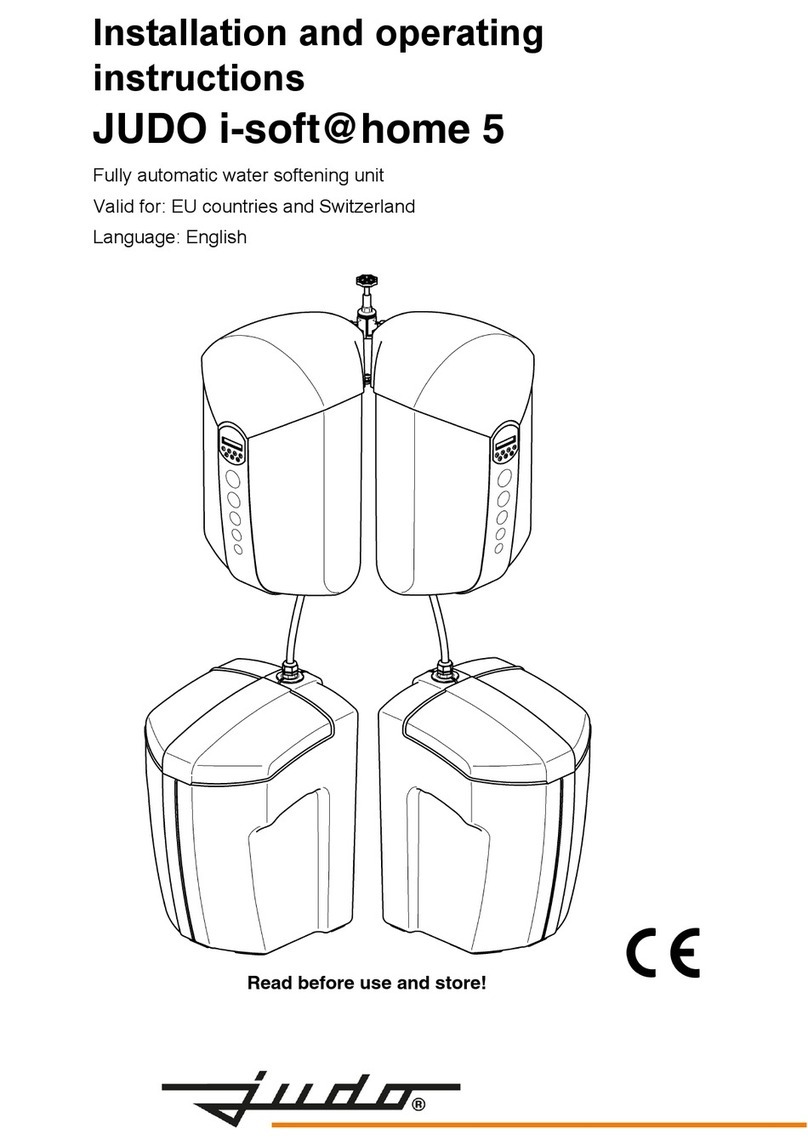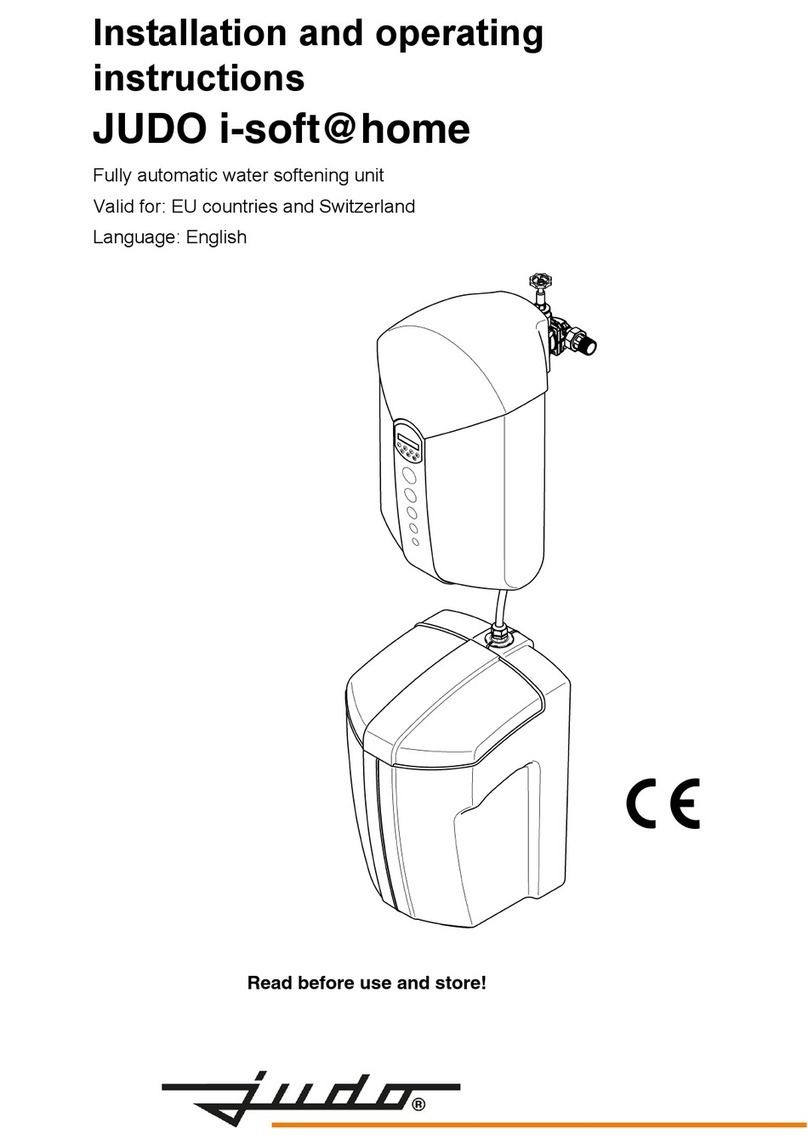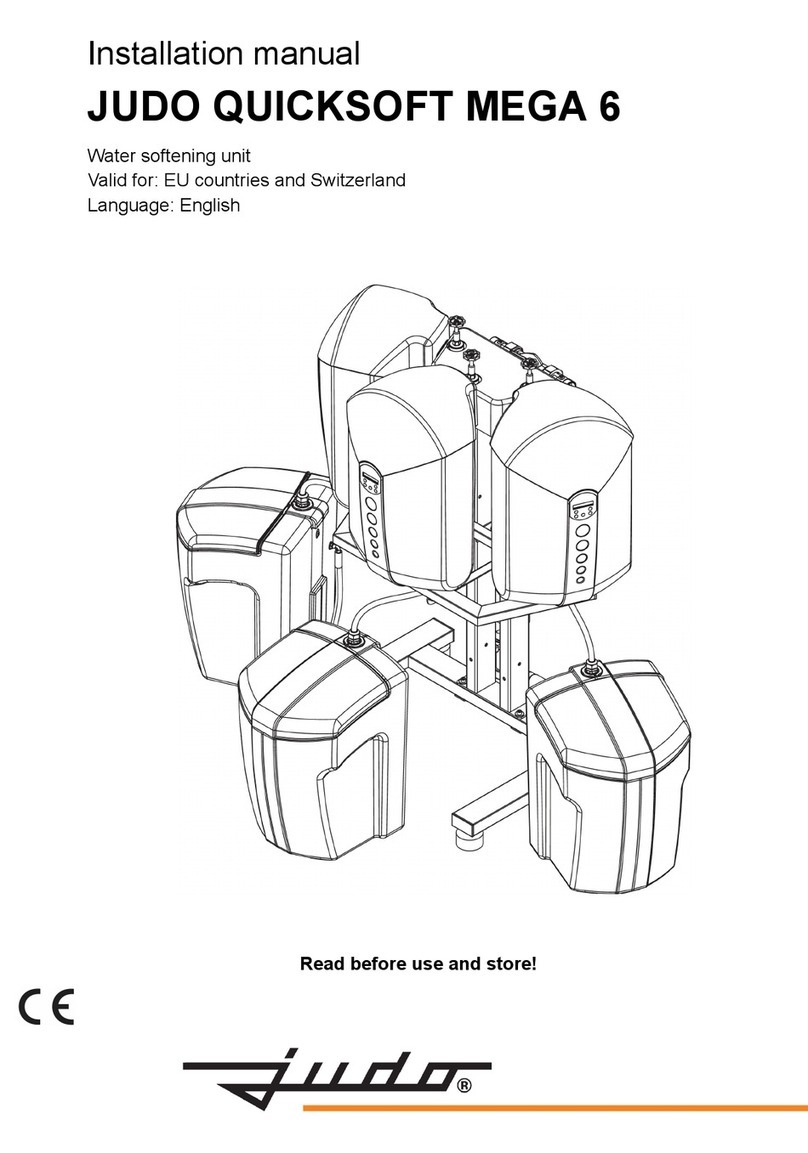
4 JUDO QUICKSOFT-UNO
About this Operating Instructions
Table of Contents
1. About this Operating Instructions ... 4
1.1 Symbols used .............................. 5
1.2 Safety information and dangers
due to non-compliance ................ 5
1.3 Units used.................................... 5
2. Intended Use ...................................... 6
2.1 Water pressure ............................ 7
2.2 Notes on special dangers ............ 7
3. Product Information .......................... 8
3.1 Intended purpose......................... 8
3.2 Test marks .................................. 8
3.3 Materials used ............................. 8
4. Installation ......................................... 9
4.1 General........................................ 9
5. Operation ......................................... 13
5.1 Commissioning .......................... 13
5.2 Functional description................ 16
5.3 Salt fill ........................................ 17
5.4 Modifications / changes / spare
parts........................................... 17
5.5 Stoppages .................................18
6. Faults ................................................ 19
7. Maintenance..................................... 20
7.1 Cleaning .................................... 20
8. Warranty and Services.................... 20
9. Data Sheet........................................ 21
9.1 Type........................................... 21
9.2 Technical specifications............. 21
9.3 Diagrams ................................... 22
9.4 Installed dimensions .................. 24
9.5 Scope of supply ......................... 24
9.6 Accessories ............................... 24
10. JQS-U Spare Parts ......................... 25
11. Service Record Sheet ..................... 31
12. Customer Support...........................32
Enclosure: Consultation Voucher
1. About this Operating In-
structions
ATTENTION
(see chapter on “Safety information and
dangers due to non-compliance”)
The instruction manual must be permanent-
ly available at the place in which the Soften-
er is used.
This instruction manual is intended to make
it easier to familiarize yourself with the Sof-
tener and its possible intended uses.
The instruction manual contains important
information in order to safely, properly and
economically run the Softener.
It contains fundamental information, which
must be observed during installation, opera-
tion and maintenance. Observance of this
information helps to avoid dangers, reduce
repair costs and increase the reliability and
service life of the Softener.
The instruction manual must be read and
used by each person entrusted with carrying
out work on the Softener, for example:
– installation
– Operation
–Maintenance (servicing, inspection, re-
pair)
Installation and maintenance may only be
carried out by personnel authorized by the
manufacturer, who are capable of fulfilling
the instructions given in the installation and
operating instructions and the country-spe-
cific regulations.
Apart from the instruction manual and the le-
gally binding accident prevention provisions
applicable in the country and place of use,
the recognized technical regulations for safe
and proper work must also be observed.
